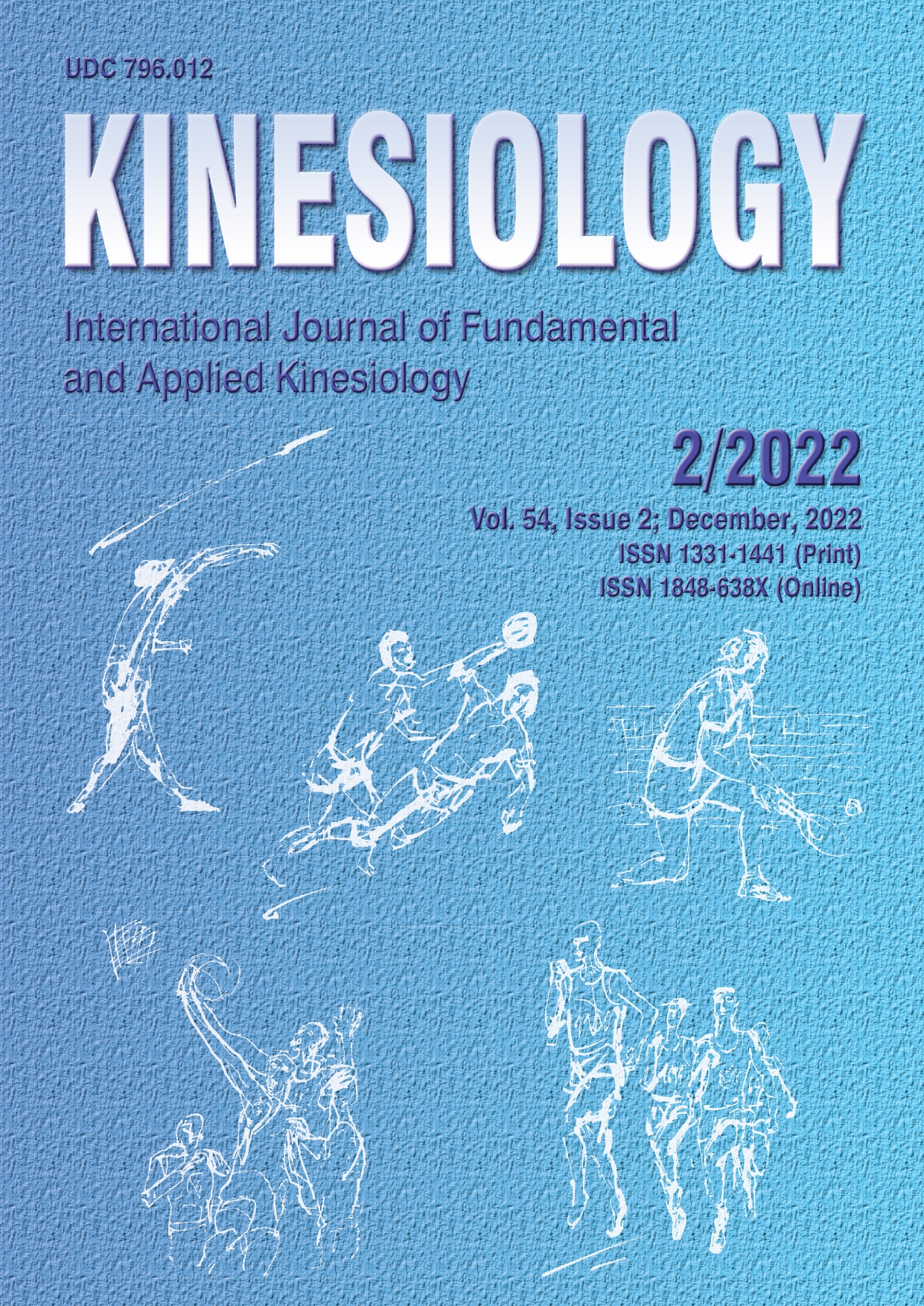IS THE RELATIVE AGE EFFECT PREVALENT IN ELITE BRAZILIAN MALE FUTSAL? AN INVESTIGATION BASED ON AGE CATEGORIES AND PLAYING POSITIONS
Abstract
This study aimed to investigate the existence of relative age effect (RAE) in male Brazilian futsal athletes according to age categories and playing position. Data from male futsal athletes from the top five teams in Brazil were collected during May and June 2021. The distribution of birth dates of 387 male futsal athletes was analyzed, based on their age categories (U15, n = 97; U17, n = 88; U20, n = 116; senior, n = 86) and playing positions (defender, n = 76; winger; n = 162; pivot, n = 69; goalkeeper, n = 80). Chi-squared tests were used to analyze the birth dates distribution based on quarter and semesters of the year according to age categories and playing positions. The overall analysis of birth quarter indicated a higher occurrence of births in the first quarter of the year (p<.001; V = 0.188). The age categories analysis indicated a uniform distribution in U15 (p=.09; V = 0.15) and unequal distributions in U17 (p<.001; V = 0.29), U20 (p<.007; V = 0.19) and senior (p<.01; V = 0.21) categories. The playing position analysis indicated a uniform distribution for the pivots (p=.11; V = 0.17) and unequal distribution for goalkeepers (p<.04; V = 0.19), wingers (p<.002; V = 0.19) and defenders (p<.002; V = 0.27). We concluded that RAE was present in Brazilian elite men’s futsal, especially in the U17, U20, and senior categories, and goalkeepers, wingers, and defenders. Our results reinforce the need to consider the effects of relative age in the development of Brazilian elite futsal players.
Key words: RAE, birth-date, birth effect, talent selection, elite athletes
Downloads
Published
How to Cite
Issue
Section
License

This work is licensed under a Creative Commons Attribution-NonCommercial 4.0 International License.
At Faculty of Kinesiology we recognize that access to quality research is vital to the scientific community and beyond. Kinesiology is non-profit journal and all costs of publishing and peer review process are covered by the publisher itself or other funding sources like Ministry of Science and Education of the Republic of Croatia. Full text papers are also available free of charge at http://hrcak.srce.hr/kineziologija. There are no restrictions on self archiving of any form of paper (preprint, postprint and publisher's version).
Articles are distributed under the terms of the CC BY - NC 4.0
Kinesiology does not charge any fees to authors to submit or publish articles in our journal.


